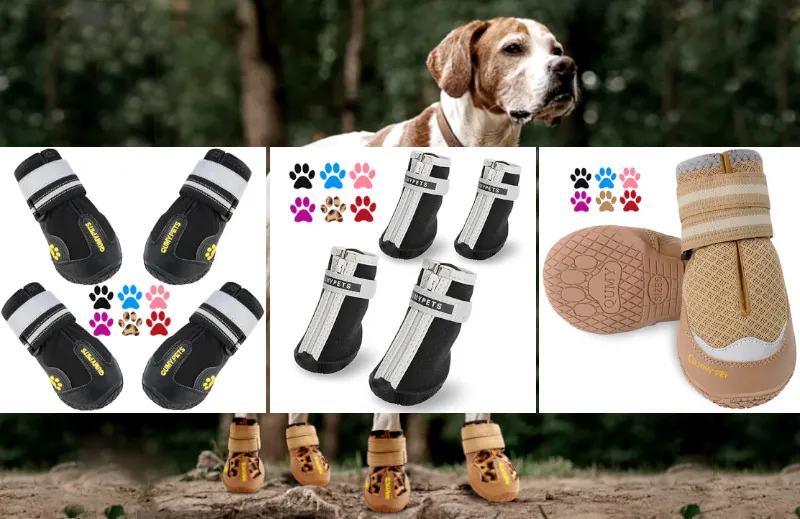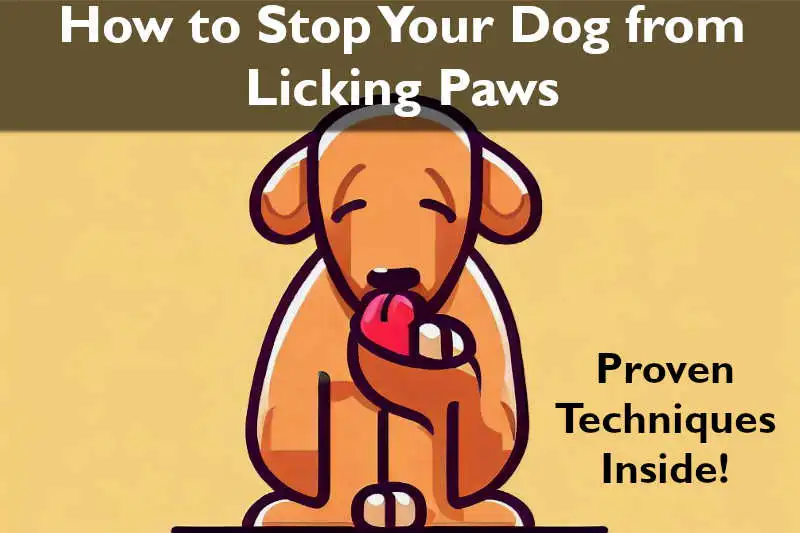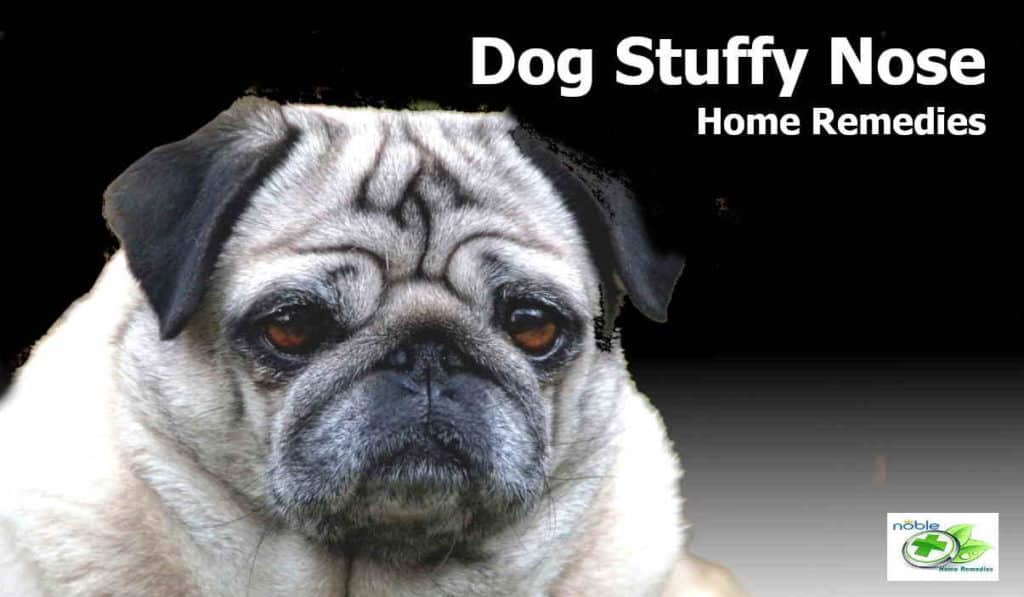Epsom Salt for Dog Paws: 4 Steps Quick Relief For Dog Paws

The pitter-patter of puppy paws brings joy to every dog owner. From long walks to games of fetch, dogs rely on their paws for everything. But when you notice your canine companion limping or excessively licking paws, it signals a problem. Cracked pads, scrapes, burns blisters and more can plague your pup’s paws, causing them pain and limiting their activity.
Seeing your active energetic dog suddenly become reluctant to play or go on walks is worrying. While severe paw injuries require a trip to the vet, Epsom salt can provide an effective home remedy for many mild to moderate dog paw issues. Epsom salt for dog paws is more effective in addressing related problems because of its magnesium and anti-inflammatory properties. Epsom salt helps treat a variety of afflictions plaguing your dog’s paws.
Dogs use their paws constantly while walking, running, digging, balancing, and exploring the outdoors. It’s no wonder the pads, nails, skin, and tissue between the toes sustain wear and tear and injuries. Cracked paw pads, interdigital cysts, blisters, scales, redness between the toes, and excessive licking can indicate a deeper problem. With its unique mineral compounds, Epsom salt can provide soothing relief and healing for many of these common dog paw problems when used properly.
This article provides a comprehensive guide on using Epsom salt soak to treat and relieve common dog paw problems ranging from itching paws to cracked pads to blisters and infections. You’ll learn the benefits Epsom salt provides for ailing paws along with step-by-step instructions to make a soothing, healing foot bath. Soon your dog will be back to running, playing, and going on lengthy walks pain-free. Read on to give your pup’s paws some tender loving care with the healing power of Epsom salt!
Common Dog Paws Problems That Epsom Salt Can Help Treat
An Epsom salt (magnesium sulfate) soak can do wonders for all kinds of paw issues in dogs, including:
- Cracked Pads: It’s not uncommon for dogs that walk or run on sidewalks and other hard or rough surfaces to develop cracked, bleeding pads on their feet. An Epsom salt foot bath can help soothe and heal cracked pads.
- Allergies & Itchying: Dogs can have allergic reactions on their paws from exposure to allergens. Soaking in an Epsom salt bath can help reduce itchy, inflamed skin.
- Scrapes and Cuts: Exploring the outdoors often leads to injured paws from scrapes and cuts. The magnesium in Epsom salt helps disinfect minor wounds on paws and facilitates healing.
- Chemical or Pesticide Burns: Dogs that go barefoot on grass or soil treated with chemicals may burn their paws. An Epsom salt soak can help soothe chemical irritants on paws.
- Interdigital Cysts: Painful cysts can develop between dog toes. Epsom salt helps dry out the cysts and reduce swelling and inflammation.
The Benefits of Using Epsom Salt for Dog Paws

There are several science-backed benefits of Epsom salt. Epsom salt for dog paws is also highly beneficial in addressing many issues including:
Reduces Inflammation and Irritation: The magnesium in Epsom salt helps reduce discomfort and swelling around affected areas. Alleviate itching and provide soothing relief for dogs.
Disinfects Cuts and Scrapes: Epsom salt has antimicrobial properties that help prevent infection in paw pad scrapes, cuts, and wounds while drawing out pus or debris.
Draws Out Infection: In addition to preventing infection, Epsom salt baths may help draw out any existing infections on the paw pads and facilitate drying out paw infections.
Soothes Paws After Exposure to Irritants: Chemicals, pesticides, salt, detergents, or allergens often irritate dog paws. An Epsom salt soak can help remove traces of the irritant and restore comfort.
Step-by-Step Guide for Using Epsom Salt for Dog Paws
Giving your dog an Epsom salt foot bath is very simple and generally safe if some basic precautions are followed. Here is a step-by-step guide:
- Fill Foot Bath with Lukewarm Water and Epsom Salt: Add approximately 1/2 cup of Epsom salt per gallon of water. The water should be lukewarm to prevent burning – between 100-105°F is optimal. The amount of water will depend on the size of your dog and foot bath. Use enough so they can submerge their paws.
- Have the Dog Soak Paws for 5-10 Minutes: Place your dog’s affected paws in the solution and have them stand still for 5-10 minutes to soak properly. Provide praise and treats to make it a positive experience.
- Rinse Paws and Pat Dry: Rinse off all salt residue and gently pat paws dry with a soft towel. Be careful not to rub too vigorously as they may still be tender.
- Apply Coconut Oil (Optional for Extra Moisture): You can apply some coconut oil to your dog’s paw pads after patting dry to replenish moisture if the skin is very cracked or irritated.
How Often Do You Soak a Dog’s Paws in Epsom Salt?
You should soak each of your dog’s paws in the Epsom salt solution for a maximum of 10 minutes. You can repeat this process up to three times a day, with a minimum of several hours between each soak. Remember to dry the feet thoroughly and in between the toes to prevent infection.
Epsom Salt for Dog Paws: Safety Precautions

While Epsom salt baths are generally harmless for dogs if used properly, owners should take some basic precautions:
- Consult your vet before using Epsom salt, especially if your dog has open wounds or sores on the skin. Introduce Epsom salt baths slowly.
- Always dissolve Epsom salt fully in water before having your dog soak injured paws, as dry salt can further irritate tender skin.
- Use lukewarm water temperatures between 100°F and 105°F to prevent burning sensitive paw skin.
Limit initial Epsom salt soaks to 5 minutes at a time when getting your dog used to them. - Prevent ingestion of Epsom salt bath water, as consuming it can cause diarrhea or tummy issues.
Avoid getting Epsom salt in the eyes. Flush with water if eye exposure occurs.
Other Helpful Tips for Managing Dog Paws Issues
Along with Epsom salt for dog paws, the following tips also promote paw health:
- Paw Wax for Cracked Pads
- Dog Boots for Outdoor Walks
- Hydrogel Sprays for Burns
- Topical Antibiotics for Infection
Paw Wax for Cracked Pads
Cracked paw pads in dogs are very common, especially during hot summer months when pavements heat up. The constant contact irritation causes thick pads to dry out and split open. To provide a protective barrier for healing cracked paw pads, apply pad wax generously before going out for a walk.
Paw wax formulas create a breathable slick coating over the pad surface, shielding existing cracks or areas from infection-causing debris. Maintain cracked pad hygiene while also preventing new injuries by choosing a non-toxic paw wax. Apply and reapply daily till healed.
Dog Boots for Outdoor Walks

Whether it’s hot pavement in summer or icy, snow-covered ground in winter, outdoor terrain can aggravate your dog’s paw problems. Investing in a set of flexible, durable dog boots is wise to shield paws from extreme weather elements.
Look for boots with good traction to prevent slips but also ensure flexibility for natural movement and comfort during lengthy wear. Take your dog’s activity level and paw condition into account in choosing weatherproof dog shoes.
Protect existing wounds while avoiding new injuries so your dog can exercise safely no matter the season.
Hydrogel Sprays for Burns
Dogs often step onto or explore areas with chemical residues that inadvertently burn their paw pads or tissue between the toes. Hydrogel sprays featuring soothing aloe vera provide instant cooling relief from stinging skin aggravated by burns.
As an FDA-approved wound cover, hydrogel also facilitates the restoration of damaged skin exposed to flame, acids, bases, or toxins. The water-based adhesive gel isolates the wound, kills bacteria, retains moisture, and minimizes scabbing to accelerate healing. Spray liberally on clean wounds 2-3 times a day till healed.
Topical Antibiotics for Infection
While Epsom salt tackles most mild infections, your vet may prescribe antibiotic creams for more aggressive or rapidly spreading bacterial infections affecting the skin.
Typically coming as powders that get reconstituted into a paste or gel, topical antibiotics combat harmful bacteria and fungi, prevent further infection spread via licking/chewing, and promote healing.
Ensure proper dosage for the size and age of your dog. Gloves may be needed to evenly apply topical antibiotic gels over wounds without touching them. Apply daily per your vet’s instructions along with an Epsom salt soak till healed.
Takeaway
Epsom salt soak is an affordable and accessible home remedy that can provide relief for various mild to moderate dog paw issues. The magnesium sulfate in Epsom salt helps to reduce inflammation, disinfects scrapes and cuts, draws out splinters and infections, and soothes irritation on dog paws.
Remember, always consult your veterinarian before using Epsom salt on your pet. Be sure to correctly prepare the soak for your dog’s paws using lukewarm water and the right salt-to-water ratio. Limit initial Epsom salt soak time to 5 minutes as your dog gets accustomed.
So the next time you notice your dog favoring a paw, limping on a walk, licking their feet excessively, or observing other signs of paw distress, consider an Epsom salt bath as a natural solution to ease your dog’s discomfort.
With some patience and proper use of a prepared Epsom salt solution, Epsom salt for dog paws can promote relief from pain, inflammation, and infection and have your pet back walking, running, and playing comfortably.
Source:
Noble Home Remedies adheres to rigorous sourcing standards, drawing information from peer-reviewed studies, reputable academic research institutions, and esteemed medical journals and associations. We prioritize using high-quality, trustworthy sources to maintain the accuracy and integrity of our content. You can learn more about how we ensure our content is accurate and current by reading our editorial policy.
- The Benefits of Epsom Salt for Dogs
https://dogcare.dailypuppy.com/benefits-epson-salt-dogs-7592.html - Let’s Talk About Your Dog’s Feet
https://www.vanislevet.com/blog/september-2022/let%E2%80%99s-talk-about-your-dog%E2%80%99s-feet - How to Soak a Dog’s Feet in Epsom Salts
https://www.cuteness.com/article/soak-dogs-feet-epsom-salts - Epsom Salts For a Pet Dog? Tips For Safe And Effective Use!
https://canigivemydog.com/epsom-salts - 8 Common Dog Paw Problems
https://canigivemydog.com/epsom-salts - Why Does My Dog Lick Their Paws?
https://www.akc.org/expert-advice/health/why-does-my-dog-lick-chew-paws/
Items You May Require to Treat Dog Paws
Note: If you purchase any of the items below we may get a small commission at no additional cost to you.
The things based on the guide that you may need are listed here:
Choices of Dog Foot Bath: A variety of foot baths are available in the market. Choose one that suits your needs and your budget.

Epsom Salt: Stick to plain Epsom salt to avoid potential skin irritations from added chemicals.

Paw Wax for Cracked Pads: Paw wax for cracked pads can create a protective barrier on your dog’s paws, shielding them from harsh weather conditions, rough terrain, and irritants, helping to prevent further cracking, promoting healing, and much more!

Dog Boots for Outdoor Walks: Dog boots for outdoor walks can help protect your dog’s paws from harsh weather conditions, hot pavement, and rough terrain, keeping them safe and comfortable.

Hydrogel Sprays for Burns: Hydrogel sprays for burns can help soothe and cool your dog’s skin, reduce inflammation, and promote the healing of minor burns and wounds.

Sulfodene Dog Wound Care Ointment: Sulfodene Dog Wound Care Ointment can help prevent infection, promote healing, and soothe minor cuts, scrapes, and hot spots on your dog’s skin.

Veterinary Formula Clinical Care Hot Spot & Itch Relief Medicated Spray: The Veterinary Formula Clinical Care Hot Spot & Itch Relief Medicated Spray is a highly effective solution designed to alleviate itching, inflammation, and irritation in dogs and cats. Formulated with lidocaine and hydrocortisone, it provides rapid relief from discomfort caused by hot spots, insect bites, allergies, or other skin conditions.
This spray also includes allantoin, which promotes healing by moisturizing and soothing the affected areas. It is alcohol-free, ensuring it won’t sting or cause additional irritation upon application. Safe for pets over 12 weeks old, the spray can be used 2-3 times daily as needed until symptoms improve.
The product is veterinary-recommended for treating localized skin issues and is gentle enough for sensitive skin. With regular use, it helps pets feel comfortable while supporting their skin’s recovery process.

Frequently Asked Question
Is it safe to use Epsom salt for my dog’s paws?
Yes, Epsom salt is safe for dogs when used correctly. It is a natural mineral compound (magnesium sulfate) known for its soothing properties. For dog paws, it can alleviate discomfort from cuts, infections, or inflammation. However, dogs should not ingest Epsom salt, as it may cause stomach upset or diarrhea. Always supervise your dog during and after a soak to prevent licking or drinking the water.
How often should I use Epsom salt on my dog’s paws?
You can repeat this process up to three times a day, with a minimum of several hours between each soak, depending on the severity of your dog’s paw condition. Do continue monitoring, the excessive use of Epsom salt can dry out your dog’s paw pads.
What conditions can Epsom salt help treat on dog paws?
Epsom salt can address a variety of paw-related issues, including:
Soreness from excessive walking, running, or rough surfaces.
Swelling or mild inflammation caused by minor injuries or allergies.
Cuts and scrapes, as the salt helps cleanse wounds and prevent infection.
Irritation from environmental factors, such as salt-treated sidewalks in winter or rough terrain.
Always consult your vet if your dog has a severe or persistent condition, as Epsom salt may not be a substitute for medical treatment.
Can my dog walk immediately after an Epsom salt soak?
After the soak, dry your dog’s paws completely using a clean towel. This helps prevent slipping and protects against bacteria or dirt entering softened paw pads. It’s best to let your dog rest for a while indoors after the soak, particularly if their paws were treated for soreness or wounds.
Are there any side effects of using Epsom salt for dog paws?
Side effects are uncommon but can occur if Epsom salt is used excessively or improperly. These may include:
Dryness: Over-soaking can strip moisture from your dog’s paws.
Irritation: Prolonged exposure to a strong solution may irritate sensitive paw pads.
To avoid side effects, use a well-diluted solution and stick to the recommended soaking times. If your dog shows signs of redness, increased licking, or discomfort, stop using Epsom salt and consult your vet.
What should I do if my dog licks their paws after an Epsom salt soak?
While licking small amounts of Epsom salt residue is unlikely to cause harm, it’s best to prevent it. Rinse your dog’s paws with clean water after the soak to remove any residual salt. If your dog persistently licks their paws, distract them with toys or treats. Ingesting larger amounts of Epsom salt can upset your dog’s stomach, so monitor them closely.
Can Epsom salt help with paw pad injuries?
Yes, Epsom salt is effective for cleaning and soothing minor injuries like cracked or abraded paw pads. Its anti-inflammatory properties reduce swelling and promote healing. For deeper cuts or more severe injuries, you may need additional treatments such as a vet-prescribed antibiotic cream or bandaging. Always monitor healing progress and seek veterinary care if the injury worsens.
Trust in your purchase:
Every product featured on our site has been carefully researched and selected based on quality, customer ratings, and positive reviews to ensure you receive excellent value for your money.
Please note:
This post contains affiliate links. If you make a purchase through these links, we may earn a small commission at no additional cost to you. This helps support our site and allows us to continue bringing you valuable content. Thank you!
Thank you for your precious time spent with NobleHomeRemedies.
You may also like:
How to Stop Your Dog from Licking Paws
How to Stop Your Dog from Licking Paws: 12 Home Remedies Every pet owner knows…
Dog Paws Red Between Toes Home Remedies
Dog Paws Red Between Toes Home Remedies: 5 Tips That Work Have you noticed your…
What to Give a Dog for Constipation?
What to Give a Dog for Constipation?: 9 Safe Remedies Dogs are also prone to…
Home Remedies for Dog Stuffy Nose
4 Powerful Home Remedies For Dog Stuffy Nose: Worry Less Dog stuffy nose means your…
Milk for Dog Constipation
Can I Use Milk for Dog Constipation?: Powerful Help Guide Constipation in dogs is a…





